When What
2137 BC Two Chinese court stargazer, Hi and Ho, made the first extent record of a solar eclipse. Hi and Ho? Irresistible.

1790 The French Revolutionary Government chose the Tricolor to replace Bourbon standard as the national flag. Red and Blue were the colours of the patron saints of Paris, Denis and Martin. The Marquis de Lafayette suggested adding the white as a traditional colour of France. Seen many of them.

1854 Florence Nightingale went to Crimea with 38 nurses during the Crimean War. We passed by one of her hospital sites in Istanbul once upon a time.

1879 Thomas Edison demonstrated the first commercial light bulb.

1944 The Provisional Government of Charles DeGaulle enfranchised French women.

20 October.
480 BC Greeks defeated Persians at Salamis in a naval engagement. Accordingly all those Greek words related to politics entered into Europe, e.g., democracy.
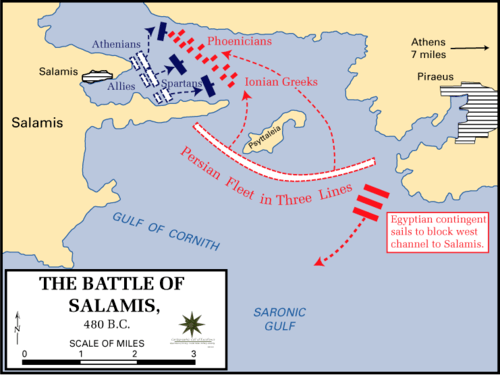
1097 Members of the First Crusade arrived at Antioch (Antakya) and set about destroying any and everything. Such was their Christian enlightenment. It is in that part of Turkey that lies between Aleppo Syria and the Mediterranean Sea.

1820 The United States bought Florida from Spain. The insects came at no additional cost. Been there.

1947 The House UnAmerican Activities Committee (HUAC) targeted Hollywood. Elia Kazan, Gary Cooper, Robert Taylor (of Grand Island), Walt Disney, and Jack Warner happily named names like Katherine Hepburn and Edward G Robinson among others as dangerous radicals. N.B. that Ronald Reagan steadfastly refused to name anyone. David O. Selznick was one of the few major figures in Hollywood who resisted HUAC. Members of HUAC loved the publicity that came from ruining lives and careers. It was the unacknowledged monster that roved Hollywood for a decade.
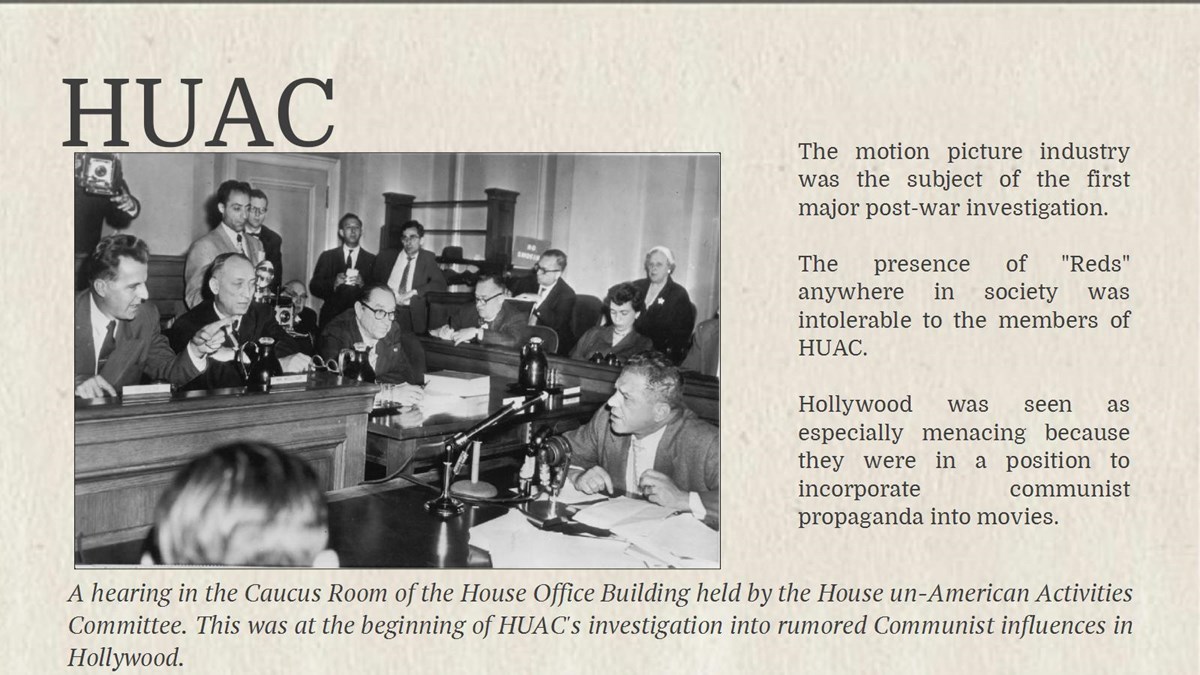
1973 Queen Elizabeth II opened the Sydney Opera House. Work had begun in 1958. When looking at it today remember it was done by slide rule, hand, and eye. Most the cost was born by a lottery run for years. Been there many times.

19 October has quite a history.
202 BC Roman general Scipio Africanus defeated Hannibal at Zama, ending the Second Punic War. Scipio prevailed against Hannibal where many previous Roman commanders had failed. Scipio was an innovator. He greatly simplified commands, delegated authority downward, and overcame the elephants by letting them pass through the lines with the lines closing behind them against the Hannibal’s infantry.
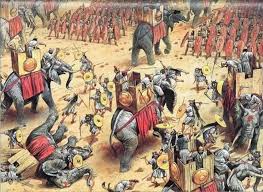
1812 Napoleon began the retreat from Moscow. What defeated him were General Typhus and General Hubris. General Winter deliver the coup de grace. Elsewhere on this blog there is a review of Andrew Roberts’s excellent biography of Napoleon that goes into more detail about his Russian campaign. The graphic shows the advance and retreat as diminishing resources, from the brilliant Edward Tufte’s book ‘The Visual Display of Quantitative Information.’ It is often cited as the most elegant and intuitive presentation of a mass of data at a glance.

1917 Salvation Army Officers Helen Purviance and Margaret Sheldon delivered doughnuts to front lines American troops in France. They carried weapons and sported gas masks, along with the doughnuts to give to the dough boys. There were hundreds of Salvos in rear areas doing the cooking and packing. What if any relationship there is between this nickname — doughboys — and doughnuts is much discussed on the inter-web.

1943 Streptomycin was isolated by researchers. It became the first antibiotic effective against the scourge tuberculosis (which the anti-vaxxers wish to bring back). The researchers thereafter engaged in a long and torturous legal battle over the subsequent the glory and gold. Penicillin was the first antibiotic, and this was the second.

1954 Britain ceded Suez canal to Egypt by treaty and withdrew the 80,000 troops it had there. In a last spasm of colonialism two years later Great Britain went back into the Canal in one the most catastrophic foreign policy blunders of the ages. The irony is that the blunder came from the hand of one of the most experienced diplomats England ever produced.

17 October…..
When What
1888 Thomas A Edison patented an Optical Phonograph (movie) projector.

1907 The Marconi company began commercial wireless service between Nova Scotia and Ireland.
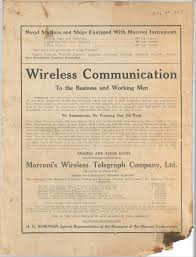
1912 Serbia and Greece declared war on the Ottoman Empire over Macedonia. This was the First Balkan War and a prelude to World War I.

1949 Work began on the Snowy Mountain Hydro-Electric project, one of the wonders of modern engineering. It was built by post World War II immigrants and it is still powering the east coast of Australia. It was in part social engineering.

1973 OPEC embargoed oil sales to USA and other Israeli allies.

18 October, just one thing after another.
1648 The Boston Shoemakers create the first trade union in North America. Why is no sporting team in Boston call the Shoemakers? Huh? Answer me that!

1851 Herman Melville published ‘Moby Dick.’ For reasons now lost, I read it both in high school and college. The student edition I had was abridged to delete much of the whaling and sailing detail.

1909 New South Wales surrendered 2,400 square kilometres of land for the Australian Capital Territory. In the field pictured below the planned city of Canberra arose. Been there many a time and hope to go ago in December to see an exhibition from the British Museum.

1929 English Privy Council ruled that women are persons in the law. The Premier of Alberta had named Emily Murphy, a municipal court judge for a decade, to a Senate vacancy. She had been the first woman magistrate in the British Empire. The Federal Government rejected the nomination and the Supreme Court of Canada upheld the authority of the Government of the Day to do so. Murphy and four associates, all member of the Alberta Legislature, pressed the case to the Privy Council in London, which in time ruled that women were persons and so qualified for the Senate. After 1949 such an appeal was no longer possible. Sometimes it is nice to have a higher authority on the job.

1954 Texas Instruments marketed the first transistor radio. I listened to many a ball game on a transistor radio (sometimes under the covers). It was another step in the miniaturisation of communication.

16 October update.
When What
1901 A Congressional vote to censure President Theodore Roosevelt failed by one vote. The cause? He had invited Booker T. Washington (1856–1915) dinner at the White House, saying that Mr Washington was a great American. He was an emancipated slave. I read Edmund Morris’s three volume biography of the remarkable Teddy some time ago. I read Washington’s ‘Up from Slavery’ as a boy.

1916 Margaret Sanger opened the first American birth control clinic in Brooklyn. A police arrest followed. A biography of her is on my long reading list.
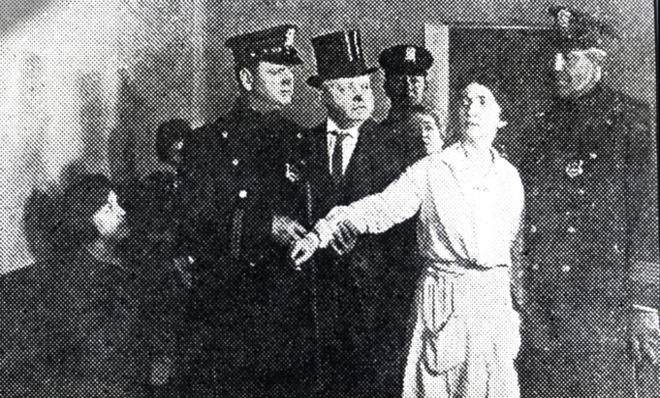
1934 The Long March began; it lasted 368 days and covered 6,000 miles. As many as 50,000 died en route. From this ordeal Mao emerged as the unquestioned leader of the Communist Party of China.

1970 The October crisis deepened with the declaration of the War Measures Act. There were 8000 armed troops on the streets of Montreal and Gendarmerie royale du Canada made 500 arrests without habeas corpus. Minister of Labor, Pierre Laporte was murdered in retaliation. Strangled with his crucifix chain by one of kidnapper while the others watched.

2002 Bibliotheca Alexandrina opened in commemoration of the Library of Alexandria that was lost in antiquity. A smoker did not use the ashtrays provided.

15 October had its moments. Did it ever!
1529 Sultan Suleiman of the Ottoman Empire folded his tent and abandoned the siege of Vienna and retreated before the winter struck, so much wiser than either Napoleon or Hitler. I am told his tent can be seen in the Arsenal in Vienna and we hope to see it soon.

1917 The French Army executed Dutch woman Margaretha Geertruida Zelle (Mata Hari, ‘eye of the day’ in Malay) by firing squad at Vincennes. When stupid French strategies were repeatedly defeated, there could only be one explanation. Witchcraft! Some things never change.

1928 After a four day trip the German dirigible Graf Zeppelin landed in Lakehurst, NJ, ushering in a new era of lighter than air luxury Trans-Atlantic travel. That is what the posters said. We saw some specially designed lightweight luggage for Zeppelin flights at the Handbag Museum in Amsterdam.
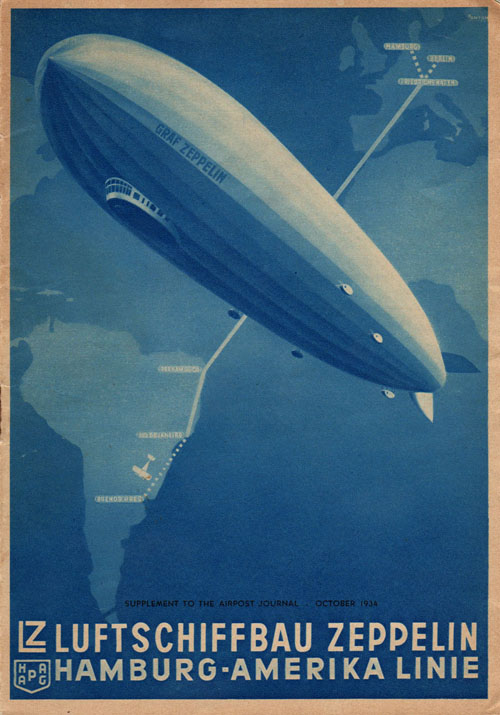
1935 Il Duce’s Italians invaded Ethiopia. The League of Nations proved unequal to the challenge this war brought. Haile Selassie made a remarkable plea in Geneva for intervention. There are clips of it on You Tube. Frank Moorhouse’s ‘Dark Palace’ (2000) recounted some of this drama. I once spend a couple of days in the archives of the League of Nations in Geneva reading index card records.
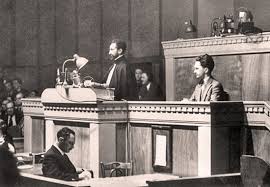
1964 Nikita Khrushchev was ousted as secretary of the Communist Party of the USSR. Leonid Brezhnev and Alexei Kosygin took over. It was a frightening time of uncertainty on the Platte.

14 October….. What a day!
When What
1066 William of Normandy defeated King Harold in the Battle of Hastings (not on Platte or Hudson). ‘Foyle’s War’ made it all better until Christopher got all holier-than-everyone-else.
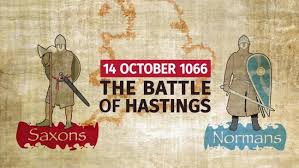
1890 The man from Abilene (Kansas) was born: Dwight David Eisenhower. Been to the house where the six boys grew up.

1926 A. A. Milne published ‘Winnie the Pooh.’
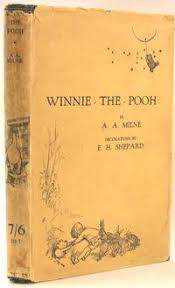
1947 Chuck Yeager became the first person to fly faster than the speed of sound in Bell XS-1. A milestone on the way to space flight. Immortalised in Tom Wolfe’s ‘The Right Stuff.’

1962 USAF U-2 reconnaissance planes photographed installations of Soviet-made missiles capable of carrying nuclear warheads in Cuba. In school we trooped to the basement and did duck and cover drills just like this.

13 October lives on and on.
13 October ……..
When What
54 Nero became emperor of the Romans. The rest is history.

1792 George Washington laid the cornerstone of the White House, which was completed eight years later. John Adams was the first president to occupy it. Seen that.

1933 Sydney’s first ‘electromatic vehicle actuated controller’ (traffic light) was installed at the Intersection of Kent and Market streets. Waited there. (In 1965 Canberra got its first set.)
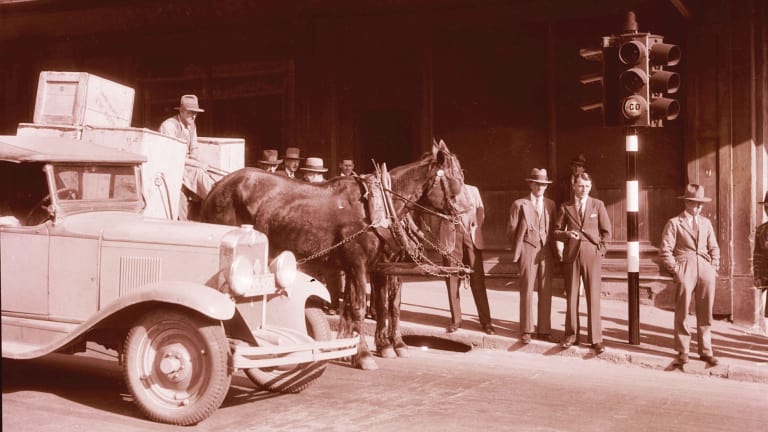
1958 The bear was found in Paddington Station. Been there but no bear was sighted.

1983 Back when greed was good the first public cell phone network began operations in Chicago using the Motorola DynaTAC phones the size of a brick. The company was Ameritech. Mine’s smaller than yours!

12 October had its moments.
When What
1492 Columbus sailed the ocean blue to the Bahamas. The date was first celebrated in the United States in 1792. There are many memorials to the Genoese in Spain. Seen this massive crypt in Sevilla.

1576 Rudolf II became Holy Roman Emperor. Rudy II dabbled in alchemy, the occult, and automata. He had little interest in imperial duties but loved the laboratory and workbench. One result was the Thirty Years War over religion, as Protestants and Catholics murdered each other to prove they were Christians. Occasionally united in the desire to murder Jews. We walked through his Prague palace on that hill which later had far more unsavoury residents.

1918 Norman Lindsay published ‘The Magic Pudding.’ It came with mother’s milk for generations of Australian children.
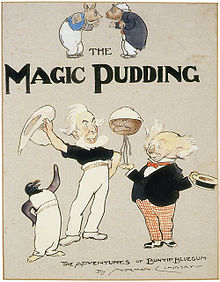
1823 Charles MacIntosh began selling raincoats in Scotland. The ‘k’ came later. The image is an 1892 model. It took much trial and error to get to the contemporary versions. We bought ours in Dublin from a man with an Italian name and an Irish accent.

1984 The Vancouver SkyTrain was completed with 64 kilometres of track. World’s longest automated light rail. It is one of the lasting benefits of the Vancouver Expo. Almost all of it is elevated. I rode on it once when in Rain City. Did it inspire the ill fated Sydney monorail which is now long gone?

